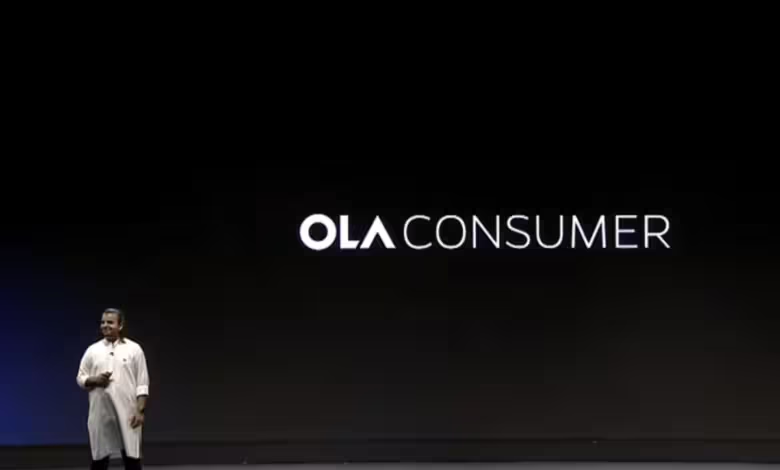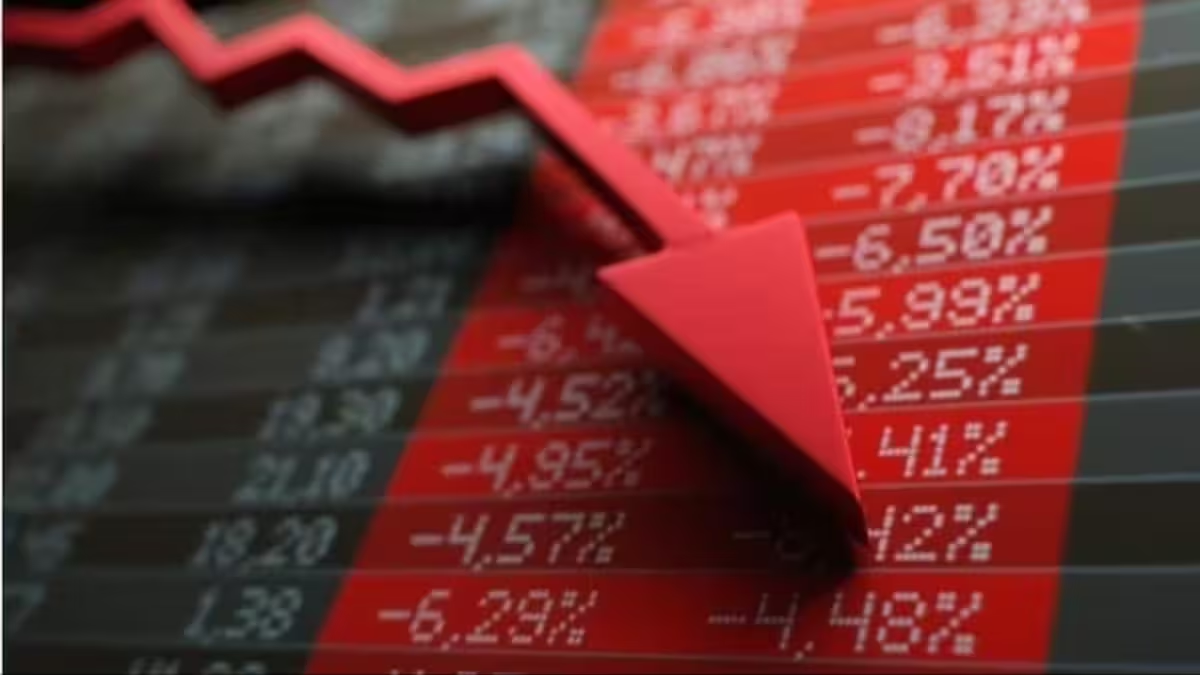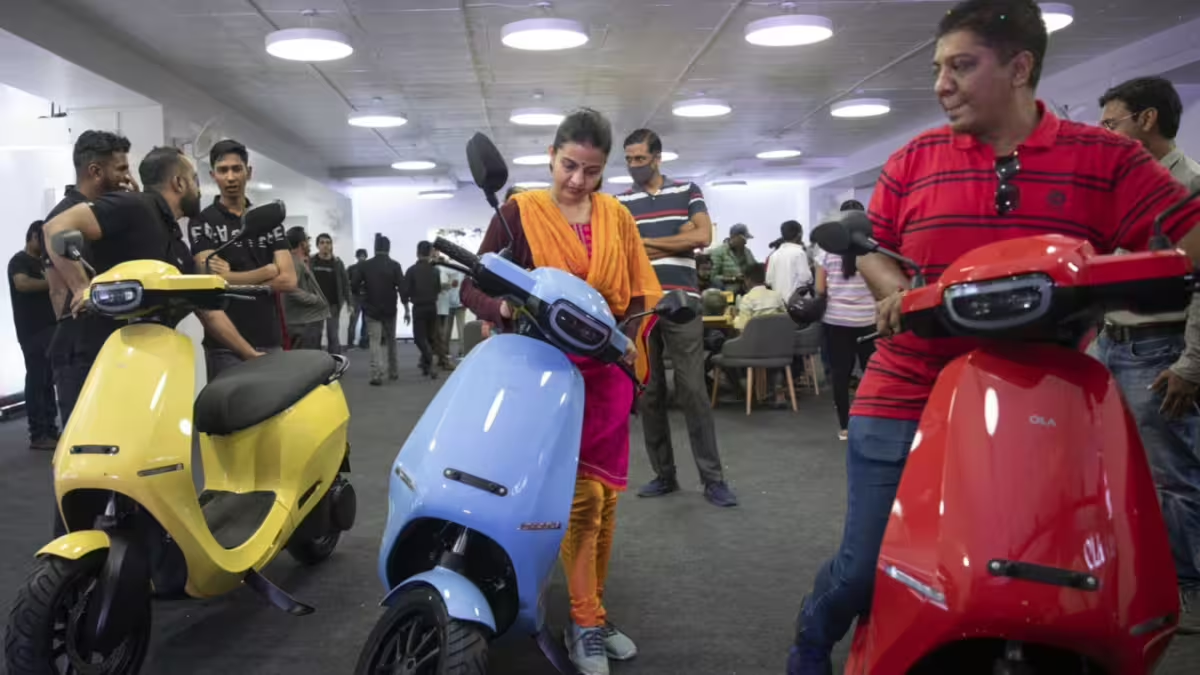Ola’s Valuation Goes Down Again – Reality Check!
Recently Vanguard decreased Ola's valuation to approximately $2 billion, that is 72% low from its all time high in 2021.

A significant event that speaks both to market trends and operational challenges is the significant downward valuation of Indian ride-hailing entity Ola’s parent venture, ANI Technologies, by one of the world’s largest investment companies, Vanguard, according to reports. The latest regulatory filing shows Vanguard now values Ola Consumer at around $2 billion as of August; this is significantly lower than the peak valuation of $7.3 billion in 2021. This downward revision takes place at a time when several concerns are being raised over a series of poor leadership choices and service issues that had been plaguing the firm.
The firm’s funds, Vanguard World and Vanguard Variable Insurance, said that their stake in ANI Technologies was worth around $14.3 million – a huge decrease from their initial investment of $51 million in 2015.
Leadership Challenges And Service Quality Issues
The latest events are a reflection of how decisions taken by the leaders of a company are critical determinants of the value of the company. Indeed, the public Twitter spat between CEO Bhavish Aggarwal and comedian Kunal Kamra has resulted in the company losing ₹3,500 crore of market value within one day. Leadership behavior can directly affect the market’s confidence. This incident, added to persistent customer service issues- including reports of 80,000 monthly complaints at Ola Electric-has left serious questions about the company’s operational stability and management approach.
Past employees have also spoken about a toxic work culture at Ola, and the company faced severe criticism for its management of the protests of drivers and complaints from customers. These internal issues have had external repercussions, for example – competitors like Uber have solidified their hold over the consumers during most turbulent times for Ola in India.
 The valuation journey of the company has been quite turbulent, with multiple reassessments by Vanguard since 2015. Ola was first valued at nearly $5 billion. By 2017, the valuation had to be cut by 40%, forcing it to raise capital through a down round led by its existing investor SoftBank. The company revived during the bull cycle of 2021, reaching a valuation of $7.3 billion, but that was only temporary as operational challenges and leadership concerns continued mounting.
The valuation journey of the company has been quite turbulent, with multiple reassessments by Vanguard since 2015. Ola was first valued at nearly $5 billion. By 2017, the valuation had to be cut by 40%, forcing it to raise capital through a down round led by its existing investor SoftBank. The company revived during the bull cycle of 2021, reaching a valuation of $7.3 billion, but that was only temporary as operational challenges and leadership concerns continued mounting.
The New Markdown Cycle Recent: Market Response To Soaring Challenges
The systematic decline started in May 2023. While Ola’s value, as reflected in Vanguard’s books, stood at $4.8 billion in May 2023, the value declined to $3.5 billion by August 2023. However, it was the cut in February 2024 that witnessed the biggest valuation decline for Ola when the value fell to $1.9 billion, translating to an enormous 74% from its peak in 2021.
These valuation cuts, the industry feels, have also been the fallout of growing issues that have crept into its operational execution and leadership style rather than market conditions. Poor handling of driver protests, customer complaints, and issues related to product quality in its electric vehicle segment did not help Ola. The media reports about Ola Electric scooters plagued by technical issues and safety concerns have done little to bolster the argument of market skeptics.
Allegations of using paid influencers for generating positive word of mouth regarding its products instead of taking care of the real problems in products and services further complicated the situation. Public perception management in the company, combined with criticism from it, brought into focus transparency and corporate governance.
Effect Of Bhavish Aggarwal’s Egotism On Ola’s IPO
 The God-complex of Bhavish Aggarwal could be a reason for the company’s terrible IPO results since Indians are highly emotion driven and we never want to be associated with a name that has attitude problems, especially when their customer support does not provide any support. Moreover, his impulsive character is such that he fought the Kunal Kamra feud on Twitter. This depicts Bhavish Aggarwal’s immature behavior with not having an iota of conscience in respect of the backlash.
The God-complex of Bhavish Aggarwal could be a reason for the company’s terrible IPO results since Indians are highly emotion driven and we never want to be associated with a name that has attitude problems, especially when their customer support does not provide any support. Moreover, his impulsive character is such that he fought the Kunal Kamra feud on Twitter. This depicts Bhavish Aggarwal’s immature behavior with not having an iota of conscience in respect of the backlash.
It is a string of events like driver protest management to customer complaint handling. It is in this area where it could not absorb failure and could not learn anything from its mistakes. That is where the problems started for the firm, causing damage to its reputation.
Now that Ola is readying itself for its much-awaited IPO, Aggarwal’s past instances of poor judgment and rash decision-making are going to very much undermine investor confidence. Since the company has already witnessed valuation cuts, the market is going to scrutinize its leadership and governance closely.
This may be enough to dissuade an investor from investing in a company headed by a reckless CEO who demonstrates callous disregard for the problems of its significant stakeholders, including employees, customers, and the community at large. The consequence might be an undervalued IPO or, at worst, a flop IPO.
Strategic IPO Pricing and Future Plans
Against this challenging backdrop, Ola Electric’s decision to take its ₹6,146-crore IPO at a $4 billion valuation – 25% lower than its last private funding round valuation of $5.4 billion – is in itself a strategic response to the skepticism of the markets. In a recent interview with The Economic Times, Aggarwal defended this pricing: “We are four-five years old and have scaled significantly. I wanted to make sure we price it attractively for the entire investor community in India. It’s a journey of significance for the country — we’re doing EVs, cells, India manufacturing, cutting-edge manufacturing.”
Industry observers believe this is an even cautious pricing in itself and also an acknowledgement of the market’s concerns with regards to the company’s leadership and operational issues. Industry veterans like GSF Accelerator founder and CEO Rajesh Sawhney gave a nod to the move during Inc42’s MoneyX 2024, which he termed as a “wise” move wherein he added that companies that “left money on the table for new investors” were pretty good performers post-listing.
 Aggarwal plans on the expansion of product as well as innovation in the foreseeable future, especially in EV. “We have not spoken on the timeline on the car till now, but that’s just about it,” he said and emphasized on the systematic approach the company takes for the product- scooter first, followed by motorcycles while developing the cell technology, on which the whole EV platform is being built. The entrepreneur emphasizes on the idea of creating long-term value over short-term gains.
Aggarwal plans on the expansion of product as well as innovation in the foreseeable future, especially in EV. “We have not spoken on the timeline on the car till now, but that’s just about it,” he said and emphasized on the systematic approach the company takes for the product- scooter first, followed by motorcycles while developing the cell technology, on which the whole EV platform is being built. The entrepreneur emphasizes on the idea of creating long-term value over short-term gains.
The company’s current financial metrics are well-suited to these ambitions. Ola Cab now rebranded as Ola Consumer has reported Rs 3,000 crore in gross order value for the April-June quarter, with the mobility business at Rs 2,300 crore. It maintained a healthy commission rate of 24-28% on the transactions and posted an adjusted EBITDA loss of Rs 77 crore.
Market Implications And Future Prospects
As the two Ola entities – Ola Electric and Ola Consumer continue their journey on public markets, we will wait and watch as to how they will solve their intrinsic issues while carrying on growth. In fact, major financial institutions like Bank of America, Goldman Sachs, Citi, and Kotak coming on board for managing Ola Consumer’s IPO process indicates sustained institutional faith in the company despite the recent setback.
The market reaction to recent developments, in particular regarding responsiveness in public controversies and other operational matters, shows the future valuations to be very correlated with enhancements in both operation excellence and corporate governance. In the ride-hailing and EV space, the organization is being confronted with stiffer competitive forces; therefore, the company needs to balance its innovation and operations.
It is important to note that the implications extend well beyond Ola. Its valuation journey is one marked by leadership challenges as much as it is about market realities, and is thus an example for all those high-growth startups gearing up to head to the public markets. The experience again drives home the point that, when the market confides, balance in leadership, sound corporate governance, and operational excellence will be required for sustainability of valuations.
The Ola story best exemplifies the maturity changes in the Indian startup ecosystem, with high valuations increasingly being tempered by a set of fundamental business metrics and governance standards among investors and observers in the market. As the company moves ahead, its learning from previous challenges and adopting a change in leadership while maintaining the edge on innovation will determine rebuilding and sustaining market confidence.




